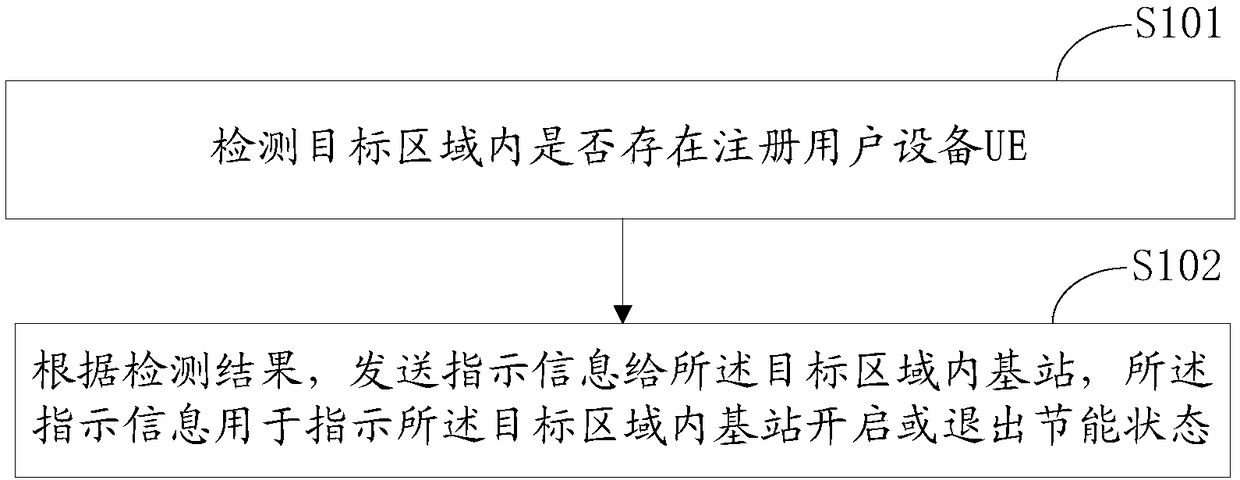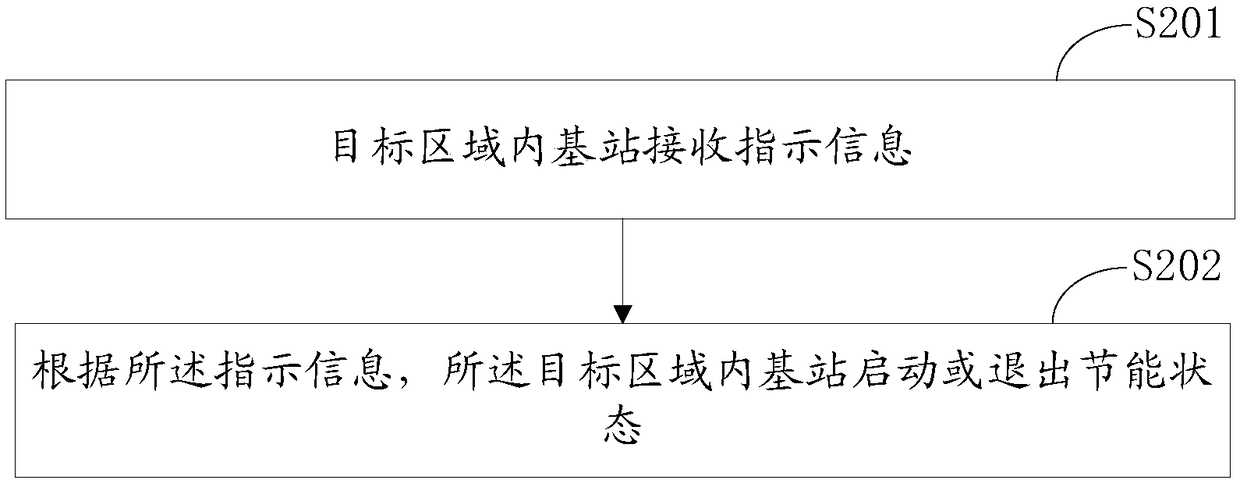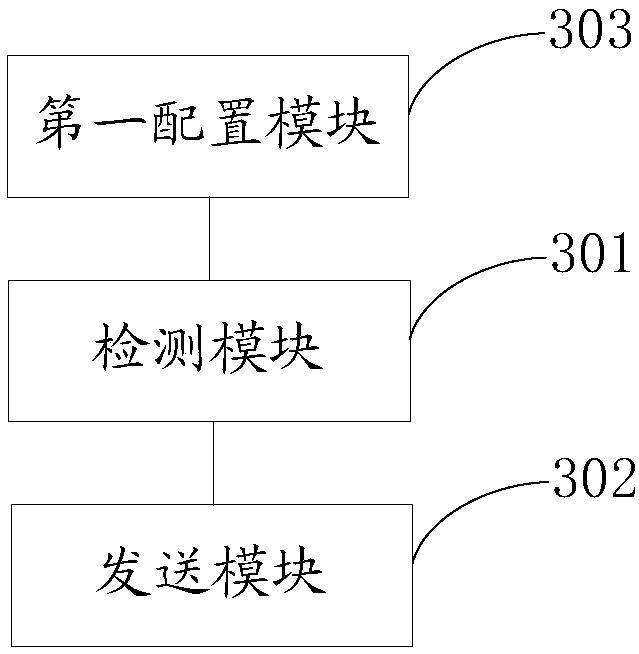Base station control method, device and equipment
A base station control and base station technology, which is applied in the field of mobile communication and can solve the problems of inability to use the network, waste of energy, and large energy loss of base stations.
- Summary
- Abstract
- Description
- Claims
- Application Information
AI Technical Summary
Problems solved by technology
Method used
Image
Examples
Embodiment 1
[0022] The first embodiment of the present invention provides a base station control method, which is applied to a core network, such as figure 1 As shown, the base station control method includes the following steps:
[0023] S101: Detect whether there is a registered user equipment UE in the target area;
[0024] S102: According to the detection result, send instruction information to the base station in the target area, where the instruction information is used to instruct the base station in the target area to turn on or exit the energy-saving state.
[0025] According to the above base station control method, the core network detects whether there is a registered user equipment UE in the target area, and sends instruction information to the base station in the target area according to different detection results. Therefore, the base stations in the target area can turn on or exit the energy-saving state according to the instruction information. This solves the problem of the ba...
Embodiment 2
[0036] The second embodiment of the present invention provides a base station control method, which is applied to base stations in a target area, such as figure 2 As shown, the base station control method includes the following steps:
[0037] S201: The base station in the target area receives the indication information;
[0038] S202: According to the instruction information, base stations in the target area start or exit the energy-saving state.
[0039] The implementation details of each step of the above method are as follows:
[0040] Before step S201, the base stations in the target area configure their own energy-saving enabling parameters. Specifically, the base station at the entrance of the target area configures its own energy-saving enablement parameter to prohibit energy saving, and the base station at the non-entrance of the target area configures its own energy-saving enable parameter to allow energy saving. In one embodiment, only the energy saving enabling parameter...
Embodiment 3
[0046] The third embodiment of the present invention provides a base station control method. The base station control method is applied to an office building. The office building has 5 low-power base stations that can cover every corner of the office building. Users can enter the office building. Use the network. The five low-power base stations are base station 1, base station 2, base station 3, base station 4, and base station 5. Base station 1 is located at the entrance of the office building.
[0047] In this embodiment, the base station control method includes the following steps:
[0048] Step S301: The core network configures the first TA parameters of the base stations (base stations 1-5) in the office building. The TA parameters are TA and TAC. After the parameters of each base station are configured, the following first TA list is formed.
[0049] Base station 1
TA1
TAC1
TA2
TAC2
Base station 3
TA2
TAC2
Base station 4
TA2
TAC2
Base stati...
PUM
 Login to View More
Login to View More Abstract
Description
Claims
Application Information
 Login to View More
Login to View More - R&D
- Intellectual Property
- Life Sciences
- Materials
- Tech Scout
- Unparalleled Data Quality
- Higher Quality Content
- 60% Fewer Hallucinations
Browse by: Latest US Patents, China's latest patents, Technical Efficacy Thesaurus, Application Domain, Technology Topic, Popular Technical Reports.
© 2025 PatSnap. All rights reserved.Legal|Privacy policy|Modern Slavery Act Transparency Statement|Sitemap|About US| Contact US: help@patsnap.com



